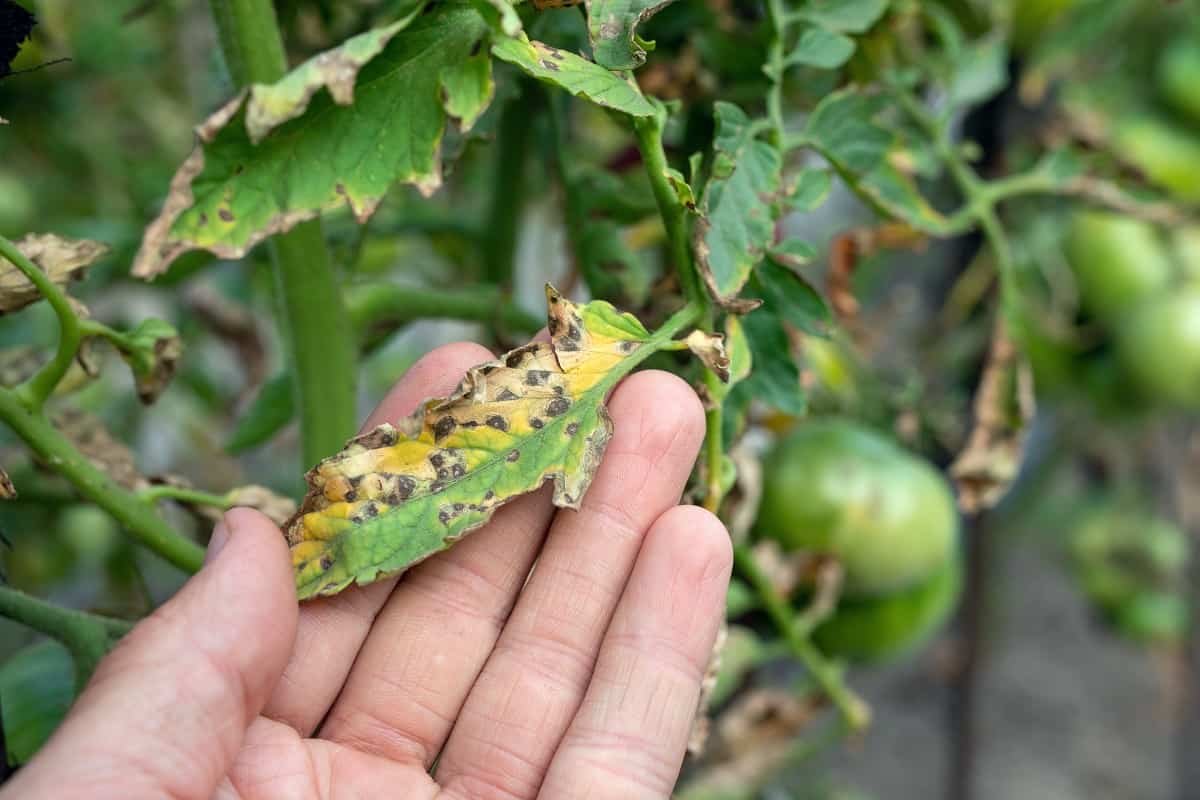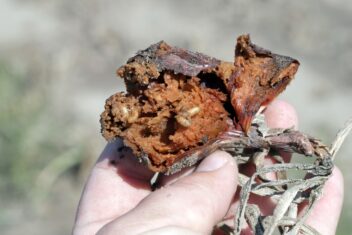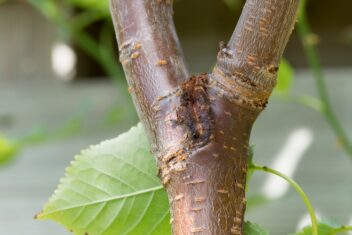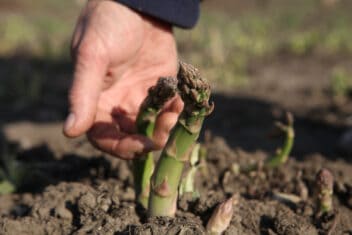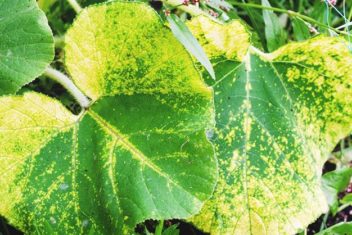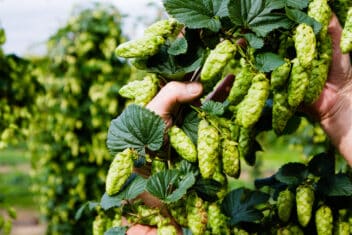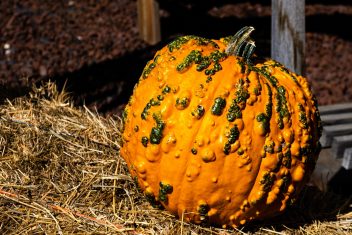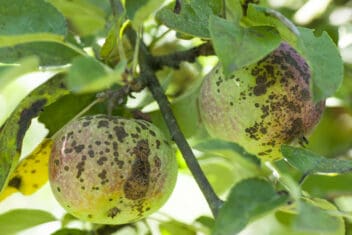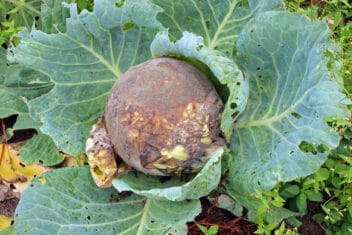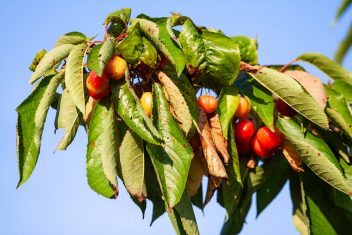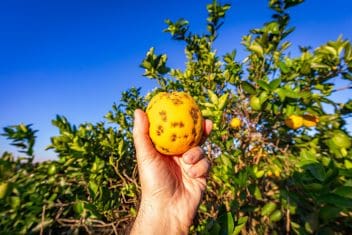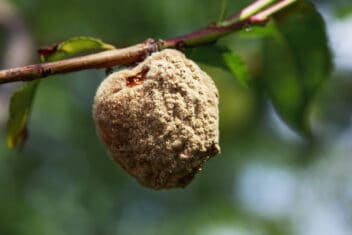If you like to garden – and particularly if you like to grow tomatoes – chances are, you’ve heard of Septoria leaf spot (even if you didn’t know that’s what it was called!).
This fungal disease is very common and can affect other plants besides tomatoes, but tomatoes are the most common. It’s found just about everywhere in the world. However, as long as you know what it is and take the appropriate steps to prevent it, you shouldn’t have to deal with it in your garden any time soon.
Here’s everything you need to know about Septoria leaf spot on your plants.
What Is Septoria Leaf Spot?
Septoria leaf spot is a disease that normally affects tomatoes but can also impact plants in the Solanaceae family, such as eggplants, potatoes, and peppers. It doesn’t matter where you live – although this disease is more common after periods of warm, wet weather (the fungus thrives in humid conditions), it affects plants all over the world.
Though it doesn’t have to spell disaster for your plants (it’s not always fatal), Septoria leaf spot spreads quickly and can cause plants to become weak and defoliated.
Because it is a fungal disease, it is spread by the spores of Septoria lycopersici, a fungus that hangs out on plant debris and weeds. It overwinters easily and is spread to individual plants when water splashes upon them from below. However, the spores are also easily transmitted by people, equipment, and insects.
Signs of Septoria Leaf Spot

In some cases, it can be difficult to diagnose Septoria leaf spot because the symptoms look very similar to those of other diseases. For example, when left untreated, the widespread disease can cause yellowed leaves that dry out and fall off the plant. It can also lead to weakness and a failure to thrive and mature.
The telltale sign of this disease, however, can be found on the leaves. The disease causes circular spots to appear on the bellies of leaves, starting with the older ones at the bottom of the plant first. These spots will be about half an inch in diameter, containing dark brown margins with pale centers.
As the disease worsens, the spots will become larger and cause the leaves to drop from the plant.
The disease appears first in the older growth of the plant but it can affect tomato plants of all ages and stages. It can cause problems both for the leaves as well as for the calyxes and blossoms. It does not affect the fruits – if you notice spots on your tomatoes, it’s likely another disease to blame, like blossom end rot.
The major impact of Septoria leaf spot is that it will eventually cause the leaves of the plant to completely die and fall off. It can weaken the plant and cause issues like sun scalding and eventual plant death.
What Plants Are Affected By Septoria Leaf Spot?
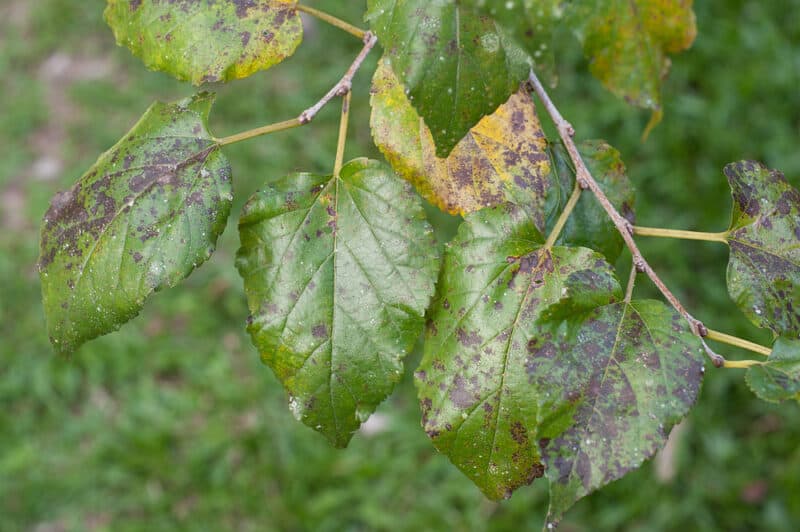
The Septoria genus of fungi is a large one, home to more than a thousand different species. There are other forms of Septoria that affect plants like cucurbits, soybeans, and pistachio trees, but Septoria leaf spot is caused primarily by Septoria lycopersici.
Normally, Septoria leaf spot will affect tomatoes, peppers, eggplants, and potatoes.
How to Prevent Septoria Leaf Spot
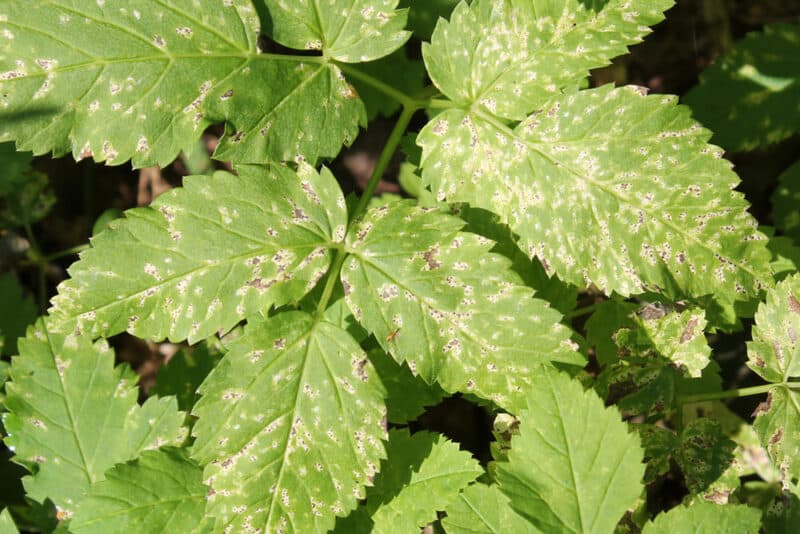
Fortunately, if you catch it early on, Septoria leaf spot is easy to treat. It’s even easier to prevent.
1. Practice Good Watering Hygiene and Plant Spacing
Without a doubt, the easiest way to prevent the vast majority of all fungal diseases in the garden is to practice good watering hygiene and proper plant spacing. Overhead watering is a big no-no when it comes to preventing disease. It will splash soil up onto your plants and can lead to contamination.
Instead, water from below, using drip irrigation systems or soaker hoses to hydrate your plants. You can’t prevent rainfall from contaminating your plants but it’s important that you do whatever you can otherwise. Whenever you water, do so first thing in the morning so the plants have time to dry off before nightfall.
Similarly, make sure your plants have plenty of room to breathe. Follow proper spacing guidelines, leaving room between your plants so they have good airflow. Staking and caging them so that they aren’t touching the ground is another good idea.
2. Use the Right Seed
Whenever possible, purchase seed that is certified as disease-free. There is some evidence that spores can be spread through seeds as well as on planting equipment like stakes and cages.
3. Mulch
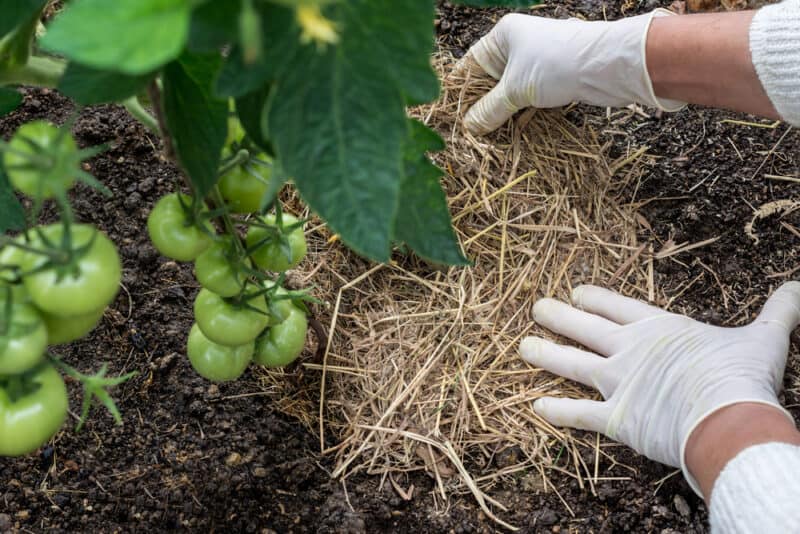
Mulching is another easy way to prevent Septoria leaf spot. It can benefit your plants in many other ways, too. Mulching will help prevent spores from the ground from bouncing up onto the lower leaves of your plants. It can also help to conserve soil moisture and will keep weeds from forming, too.
4. Weed Regularly
If you like to garden, there’s a good chance that you’re probably already taking the time to weed around your plants. It’s a good habit to get into! However, this is absolutely essential if you’re trying to control fungal diseases. Use mulch or other weed barriers if necessary, but the bottom line here is that regular weeding is essential.
5. Rotate Your Crops
Again, this is a gardening habit to get into that will benefit you in more ways than one. By planting tomatoes and other Solanaceae crops in different sections of the garden, you’ll reduce the likelihood that the fungal spores of the past will crop back up in the future.
6. Take the Time to Clean the Garden
Each fall, take the time to thoroughly clean the garden. I know, this can be tough to do when you’re already exhausted from a long, productive growing season. However, it’s essential. Get rid of all affected plants since the fungus can overwinter on old plants.
Even if you don’t think you had a problem with the fungus, cleaning the garden at the end of the season is a good habit to get into, since it will help reduce the likelihood of other pests and pathogens lingering in the soil for the next growing season.
How to Treat Septoria Leaf Spot
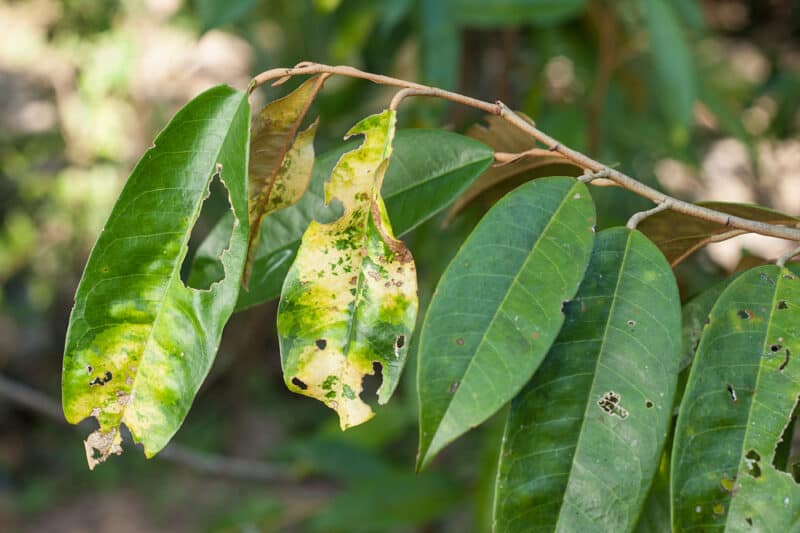
When it comes to treating Septoria leaf spot, you have a few different options.
1. Remove Affected Plants and Plant Parts
The quickest and easiest way to stop a Septoria leaf spot infestation in its tracks is to prune your plants, removing any infected leaves or, if necessary, entire plants. Be sure to wash your hands and equipment thoroughly when you are working with these diseased plants to prevent spreading the disease any further.
Once you’ve removed these parts, dispose of them in the trash. Don’t bother composting them, as the pores can sometimes survive there.
2. Use an Organic Fungicide
The next best option is to use an organic fungicide. Use one with copper or potassium bicarbonate, both of which will help stop the spread of disease. You should start spraying as soon as the first symptoms emerge.
There are other fungicides that use biological agents to help get this fungus under control. For example, bacillus subtilis can get rid of several types of fungi and is a good item to have on hand.
3. Consider Chemical Alternatives
You might also have to consider a chemical alternative with getting Septoria under control, though this isn’t always recommended if you only have a minor infection. One of the least toxic options you can use is fungonil, also known as chlorothalonil, which should get your infestation under control relatively quickly.
One word of caution – if you decide to use a chemical method of control, make sure it’s labeled for use on edible plants. Some require a delay before you can harvest your produce, and it’s always better to be safe than sorry!
Get Septoria Leaf Spot Under Control With Ease
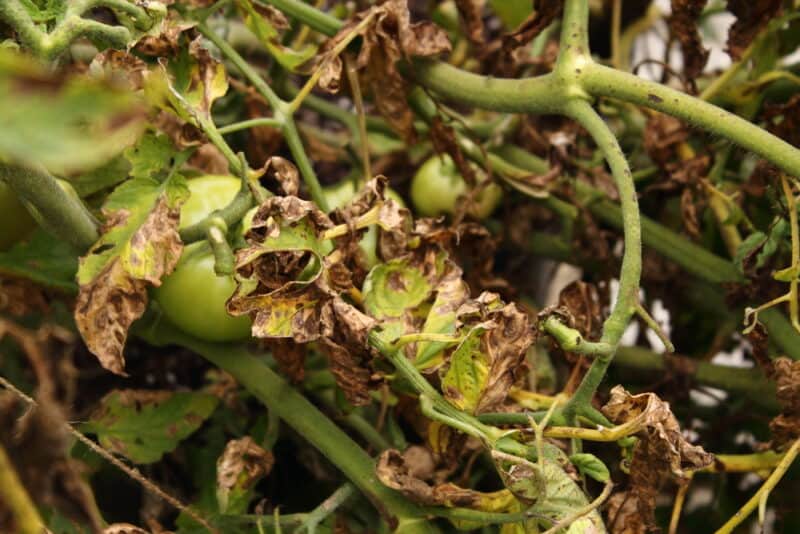
The good news about Septoria leaf spot is that you can still eat tomatoes or fruits from other plants with affected leaves. Generally, the fruit will remain intact and only the leaves will be ineffective. In addition, most fungal leaf spots can be treated.
So while Septoria can cause a lot of damage to your plants, there’s ultimately no need to panic. It’s easy enough to treat and prevent for years to come!
